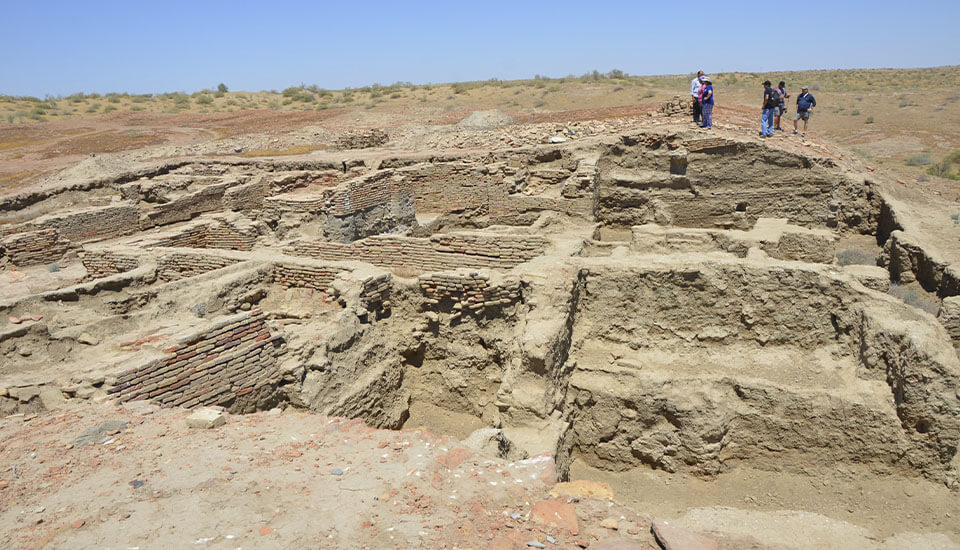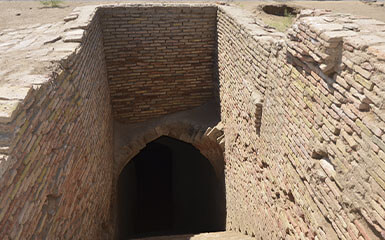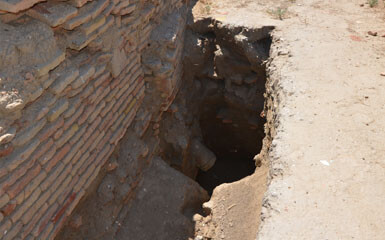Ashgabat
Alem Ferris wheel
State Museum
Fine Arts museum
Wedding Palace
Nisa fortress
Memorial Complex
Ertogrul Gazi Mosque
Neutrality monument
Independence Park
Turkmenbashi Ruhy Mosque
Olympic Village
Ylham Alley
Carpet Museum
Monument of Lenin
Ahal Region
Abivert
Altyn Depe
Annau
Darvaza
Geokdepe
Kowata
Mane baba
Zengi baba
Nedir Shah
Nokhur
Parzdepe
Sarahs baba
Seyit Jemaleddin mosque
Shahrislam
Ulug depe
Mary region
40 cupolas
Akcha Kala
Ancient Merv
Badkhyz
Chilburj
Gebeklytepe
Geok Gumbaz
Gurtly Depe
Kharoba Koshuk
Talkhatan Baba
Yekedeshik
Dashoguz region
Ashyk Aydyn Pir
Devkeshen
Ismamit ata
Kalaly-gyr
Kaplankyr Nature Reserve
Kunya-Urgench
Damla
Balkan region
Dehistan
Yangikala
Awaza
Gozli ata
Kemal ata
Mashat ata
Paraw bibi
Lunar Mountains
Shevlan Baba
Igdy kala
Shahrislam – city of underground water reservoirs

Shahrislam was an ancient city in the Garagum desert 20 kilometres north of the Bakharden. The city existed from IX to the beginning of the XV centuries. IX century was the period of the birth of urban society. There appeared handicraft villages, trade and merchant areas. The total area of the city was 100 hectares and it was a regional centre and an important stop along the Great Silk Road.
Additional fortifications were constructed for the reliable protection of inhabitants of new settlements. The outer fortress wall had more than 40 towers and 2 portals. The preserved to this day remains of the city walls and watchtowers testify to their strictly functional purpose, which was to provide the reliable protection of the urban population from the external enemy.
The Mongol invasion caused serious damage to the medieval city. The number of its population had decreased significantly. However, the destruction caused by Mongol conquerors could not completely destroy the once flourishing urban culture. In the second half of the XIII century, a tangible revival of social life was observed, and by the end of the century, it had been recovered completely.


Underground reservoirs (sardobas) at Shahrislam are found during excavations. The sardobas were fed by a system of tunnels (called kariz) that is unique in Central Asia. The tunnels carried water from more than 20 km away from springs located in the Kopetdag Mountains. Additionally, the reservoirs at Shahrislam include the only example in Central Asia of a rectangular-shaped sardoba.
The irrigation structure was indeed a unique phenomenon for that time, which was strikingly different in terms of the complexity of its design and applied engineering solutions from the similar water supply systems studied by scientists in the course of researches in Central Asia, Iran and the Caucasus. Its conveyance capacity was 250 litres per second. The bed was 60 cm wide and 80 cm high. The sidewalls were made of double-row vertical brickwork, supported by paired horizontal brickwork. The construction required large number of bricks.